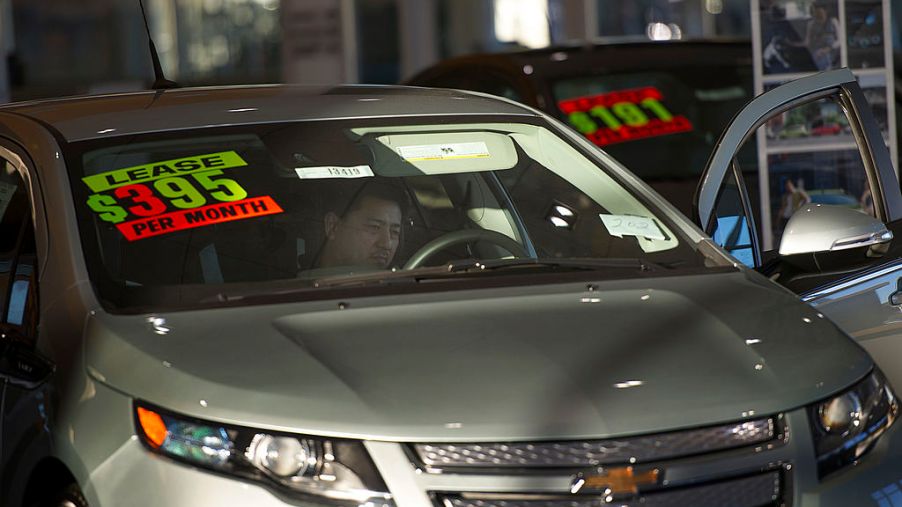
Can You Lease a Used Car? Yes! Here’s How to Do It the Right Way
Leasing a used car is absolutely possible, it just is not too common. Oftentimes when consumers think of leasing a car, their focus turns to new cars. This is heavily due to the advertising methods used by both manufacturers and car dealerships.
There is potential to save a lot of money when leasing a slightly used model of the brand new car you may have your eye on. With proper research, there is nothing wrong with leasing a used car.
It is entirely possible to save $100 per month by going with a like-new vehicle that is not fresh from the factory. There are some great used cars out there that are inexpensive and come with the approval of Consumer Reports. You can also expect to find that used luxury model cars are much more likely to be available for a used-car lease.
Is leasing a used car the same as leasing a new one?
In short, yes. The process and pricing structure are essentially the same for used cars and new cars alike. When leasing any kind of car, the dealership’s financing company will be who makes a lot of the determining factors. The finance company will likely be a subsidiary of the manufacturer. Leasing a Chevy or a GMC will have you owing your monthly payment to GM Financial.
The lender will calculate the vehicle’s residual value, the current sales price, and make a determination from there. Different vehicles will depreciate in value over time, so the residual value will vary from the year, make, and model of the vehicle you are considering.
The lender will then assign your lease a “money value” which is essentially just your interest rate. Just as buying a used vehicle will have your interest rates slightly higher, the same goes for leasing a used vehicle as well.
As a general rule of thumb, used car leases are typically only allowed on Certified Pre-Owned vehicles. You can expect these cars to be less than 4 years old and have under 48,000 miles on the odometer. Even though you may be leasing and not purchasing, you should still do your best to avoid some common mistakes made when used-car shopping.
What is the best route to take for leasing a used car?
A lot of time, money, and headaches can be saved when following a specific process for leasing a used car. The steps below are assuming that you already have a specific vehicle in mind. Or at the very least, know which manufacturer you would like to consider.
Call the finance company
Sticking with the example mentioned above where one would hypothetically be shopping for a used Chevy or GMC, you would start by contacting GM Financial.
Maybe you are looking to lease a used Honda Civic for your 17-year-old? In this case, you would reach out to Honda Auto Finance. Upon getting in touch with their customer service department, you want to ask them point-blank if they offer leases on their Certified Pre-Owned vehicles.
If you were to call the dealership they would likely skirt around the issue and do whatever they could to get you onto their lot, the finance companies will have an up-front answer ready for you.
Compare prices
Get price comparisons for both the used car you are considering and the cost of a lease on the new version of that same car. Having the numbers side by side will let you properly compare pricing options and ensure leasing a used car will be a smart financial decision.
Find the car online
Visit websites of your local dealerships and search their inventory. There are also numerous third-party websites to search for used cars all over. Be sure to keep your focus solely on Certified Pre-Owned vehicles.
Call the dealership
Do not go visit them face-to-face just yet. Try and speak with the internet sales manager or the floor sales manager. Simply let them know you have found a Certified Pre-Owned car on their lot and want to know if it is possible to lease it. If they give you a quick ‘No’ then do not be afraid to let them know you have already spoken with their captive lending service. Then, if they still say ‘No’ then ask them to confirm with someone higher up in the chain of command.
If you do not make progress with the first place you call, then move on to your second option. It is highly recommended to do this searching online and over the phone. It happens all too often that someone may visit a car lot for an inexpensive used car and end up falling victim to aggressive sales tactics and outright lies told by car salesmen, and leave the lot with an expensive brand new car.
There are downsides to used-car leasing
Downsides need to be taken into consideration when leasing a used car, or when making any financial decisions for that matter. We want our readers to also know the cons to used-car leasing in order to make a well-informed decision. Regardless of the list below, leasing a used car is often a financially smart decision depending on your current situation, needs, and wants.
- Outdated Features – New cars always have cool and exciting features. A used car is likely to be missing some options that could have been available with the newest model on the showroom floor.
- Maintenance Costs – A used car will have more mileage put on it as well as some general wear and tear. This increased mileage will likely lead to more frequent repairs, upkeep, and a need for better preventative maintenance measures.
- Higher Interest Rates – As mentioned above, you can expect your interest rates to be a bit higher than it would be on a new car.
Weigh your options
If you are considering leasing a car, it certainly does not hurt to get multiple quotes and explore all available options. For the last few years, about 30% of a dealership’s inventory is driven off the lot in the form of a lease.
A great majority of these vehicles will make it back to the lot where dealers will be in a hurry to offload the cars, many of which will have no problem doing so in the form of a used-car lease.
One final thing to keep in mind is that while leasing a used car is a great option for those looking to be a bit more fiscally conservative, it is not your only option for saving money. Shop around, come up with multiple options and choices, get multiple quotes, and do not be afraid to ask questions.


